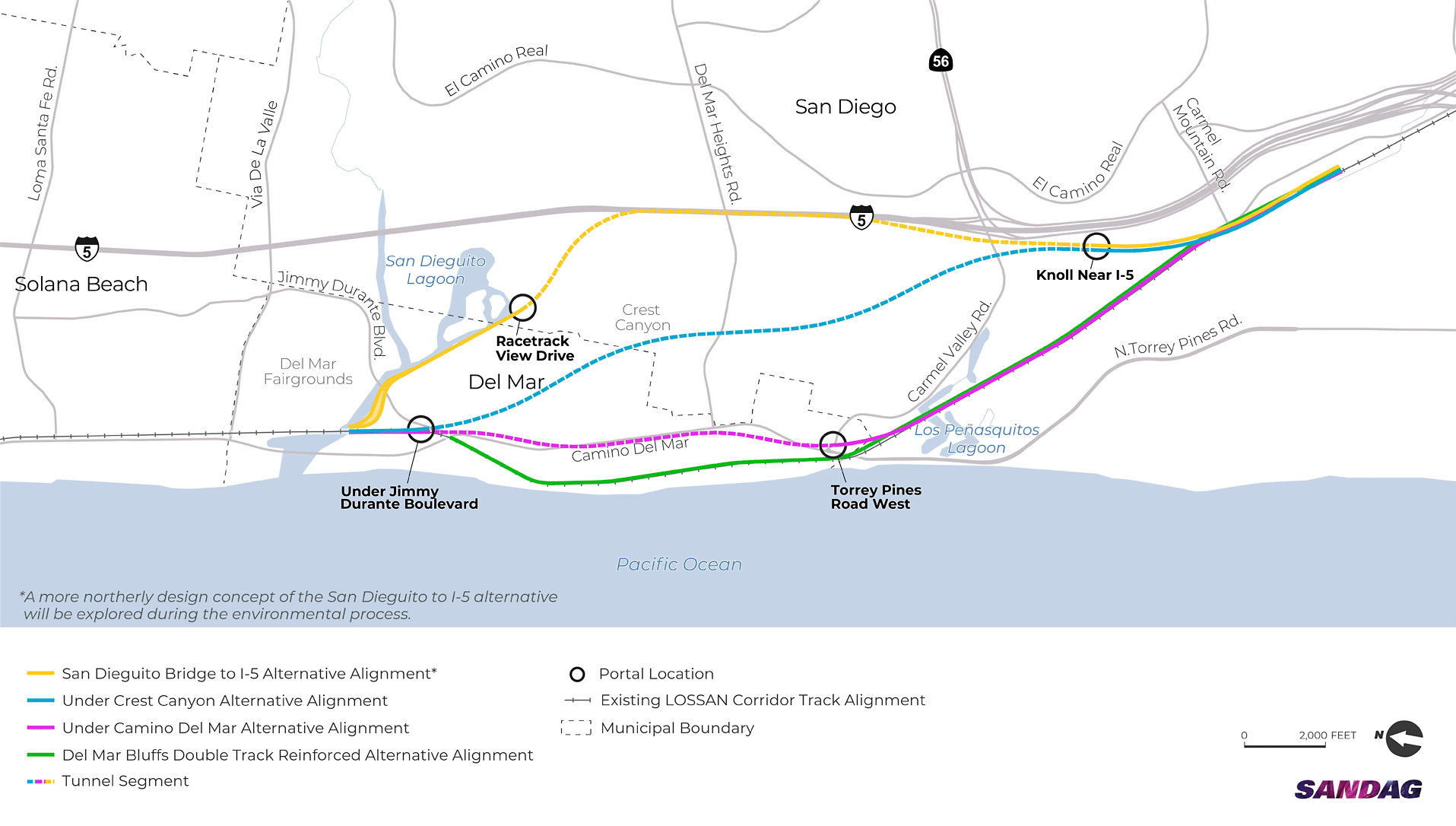Geotechnical Testing Notice: SANDAG is conducting geotechnical testing in several locations within the cities of Del Mar and San Diego to learn more about the underground soil structure. Crews may begin marking the road where utilities are located near testing sites. Learn more about the project.
Work near the intersection of Del Mar Heights Road and Durango Drive, Portofino Drive at Portofino Circle, and the shoulder of Racetrack View Drive will conclude on or before December 24.
Because the rail line through the LOSSAN Corridor is so essential, we are working on responses to landslides, erosion, and seismic activity which have caused collapses along the coastal bluffs in Del Mar and temporary shutdowns of the rail line. In the short term, we are working to stabilize the Del Mar bluffs. We are also exploring long-term solutions to ensure the rail corridor remains safe, reliable, and resilient.
Progress to Date
An updated Notice of Preparation (NOP) of a Draft Environmental Impact Report (EIR) was released in May 2025 for a 45-day public comment period. Comments received during the scoping period are part of the project’s administrative record and will inform the development of the Draft EIR. Public comments will be available to view at a later date.
Four Project Alternative Alignments

Next Steps
SANDAG plans to do geotechnical testing later this summer (2025) in several locations within the cities of Del Mar and San Diego to learn more about the underground soil structure. This work, combined with previous geotechnical studies, will help evaluate potential options for relocating the rail tracks.
Updated Notice of Preparation of a Draft Environmental Impact Report
Value Analysis Study
Notice of Preparation of a Draft Environmental Impact Report
LOSSAN Rail Realignment Alternatives Analysis
- San Dieguito to Sorrento Valley Double Track Alternatives Analysis: Full Report (2023)
- San Dieguito to Sorrento Valley Double Track Alternatives Analysis: Appendices
Past Events
- Public Scoping Meeting: May 29, 2025
- Public Scoping Meeting: June 18, 2024
- Alignments Workshop: November 15, 2023
- Alignments Workshop: November 6, 2023
- Virtual Information Session: October 19, 2023
- Tunneling Workshop: October 4, 2023
Connect with Us
We value your input and regularly review public comments and feedback. There are many ways for you to stay informed and share your thoughts.
- Follow SANDAG on social media.
- Check our calendar for opportunities to engage.
- Watch recordings of past events, available on our YouTube page.
- Contact us at lossancorridor@sandag.org



















